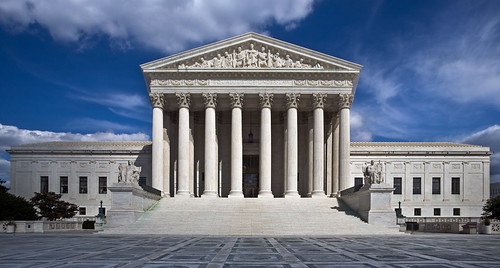
Photo: Ken McCown
One day my friend was cutting a piece of delicious cheesecake when it was proposed to do a “you cut, I choose” method to split it evenly. I took it a step further and told him to “Plessy v. Fergurson it” – meaning I wanted the pieces separate but equal. Of course no one understood what I was talking about, no one laughed, and I myself was not even sure I quoted the correct Supreme Court case.
So I went online to verify my dorky joke and found the Supreme Court information available to be quite underwhelming. You can find articles dozens of pages long about each particular case, but no concise summaries. Here are some of the famous cases ruled upon by the Supreme Court and a short description of why it was so significant to the United States.
Famous Supreme Court Cases
1st tier
- Roe v. Wade (1973) — Outright abortion bans are unconstitutional
- Marbury v. Madison (1803) — Judicial review (for Supreme Court)
- Plessy v. Fergurson (1896) — Separate but equal (segregation)
2nd tier
- Miranda v. Arizona (1966) — Rights to counsel and to remain silent
- Regents of CA v. Bakke (1978) — Affirmative action
- Tinker v. Des Moine (1969) — Freedom of speech of students in public schools
- Brown v. Board of Education (1954) — Segregated schools is unconstitutional
- McCulloch v. Maryland (1819) — Constituation is supreme law of the land
- Dred Scott v. Sandford (1857) — Slave is not a citizen but property of his owner
3rd tier
- Slaughter-House Cases (1873) — Limits privileges and immunities of state citizens
- Gideon v. Wainwright (1963) — Right to court appointed attorney if unable to afford one
- Griswold v. Conneticut (1965) — Individual’s right to privacy
- Mapp v. Ohio (1961) — Evidence procured by illegal search or seizure is not permissible in court
- Greg v. Georgia (1976) — Death penalty in not unconstitutional
Format
- 9 justices (including the chief justice)
- Nominated by the president and confirmed by majority vote of the Senate
- Serve for life (unless death, retirement, impeachment)
Interesting Tidbits
- The number of justices is not fixed and can be decided by Congress
- Anyone can be nominated (no age or birth requirements)
- There have been only 12 rejections of nominations by the Senate in history
- When the Senate is in recess the president can temporarily appoint a justice to the court without approval
- There is no process in place for when a justice is incapacitated – still living, but unable to continue service or resign
- Carter is the only president to complete at least 1 term but not have the chance to nominate a justice to the supreme court
- They sit according to seniority. Chief Justice in the middle and younger the farther out you go (right is better than left)
- The order of the case name is who lost v. won in the lower court (petitioner v. respondent)
- The Constitution does not grant the Supreme Court the power of judicial review, but supported from beginning and shown in Marbury v. Madison
- The Supreme Court is very rarely “checked”. There are only four instances of constitutional amendments overturning supreme court rulings
Books
- “The Nine: Inside the Secret World of the Supreme Court” — Jeffrey Toobin
- “The Supreme Court” — William H. Rehnquist
Videos
- PBS award winning series “The Supreme Court”:
- Toobin talks about the recent history and future
Main Sources
- Wikipedia: Supreme_Court_of_the_United_States
- In depth review of most the cases above: http://www.landmarkcases.org/
